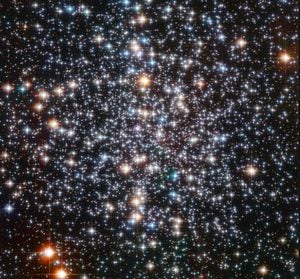Shropshire Sky At Night – May
Mercury spearheads the planetary spectacle this month, with its best showing of the year.

There is also a stunning super moon to enjoy, supplementing the wide range of deep sky objects from the notable Messier catalogue. Or we can be content with catching a glimpse of a shooting star and the rings of Saturn.
At the beginning of the month Mercury appears in the evening sky, following a superior conjunction. Spotting the planet needs a clear NNW horizon, but with a small telescope you will be able to follow its changing phases. Mercury and Venus, as inferior planets, have observable phases very much like the Moon.
Close to the SE horizon, emerging from their conjunction in January, the gas giants Jupiter and Saturn are well placed in the pre-dawn sky, providing an opportunity to employ a small telescope to observe Jupiter’s Galilean moons alongside Saturn’s rings and its giant moon Titan.
The Eta Aquarids is an above average meteor shower, capable of producing up to 30 meteors per hour at its peak, given idea conditions. They are produced by dust particles left behind by comet Halley, which has been observed since ancient times.
Peaking on the night of May 6 a second quarter moon will block out some of the faintest meteors, but if you are patient, you should still should be able to catch quite a few good ones. Best viewed from a dark location after midnight, the meteors will radiate from the constellation Aquarius, but can appear anywhere in the sky.
The 26th provides us with the second supermoon of the year, when it will be located on the opposite side of the Earth as the Sun and its face will be fully illuminated. This full moon was known by early Native American tribes as the Flower Moon because this was the time of year when spring flowers appeared in abundance. The Moon will be near its closest approach to the Earth and may look slightly larger and brighter than usual, hence a supermoon.
As part of its 28-day cycle the 11th sees the Moon located on the same side of the Earth as the Sun and will not be visible in the night sky. This is the best time of the month to observe faint objects such as galaxies and star clusters because there is no moonlight to interfere.
The Messier Catalogue, named after the French astronomer Charles Messier, is one of the most useful tools to the amateur astronomer. It was during his lifelong search for comets that Messier found and recorded a number of small cloudy objects. His journal of these objects formed the basis of the Messier Catalogue.
Obvious Messier targets are the globular clusters, M4 and M80, which are a collection of stars tightly bound by gravity, giving them their characteristic spherical shapes and high stellar densities. With a star map and a pair of binoculars you should be able to share in their beauty.
Steve Szwajkun is a Fellow of the Royal Astronomical Society





